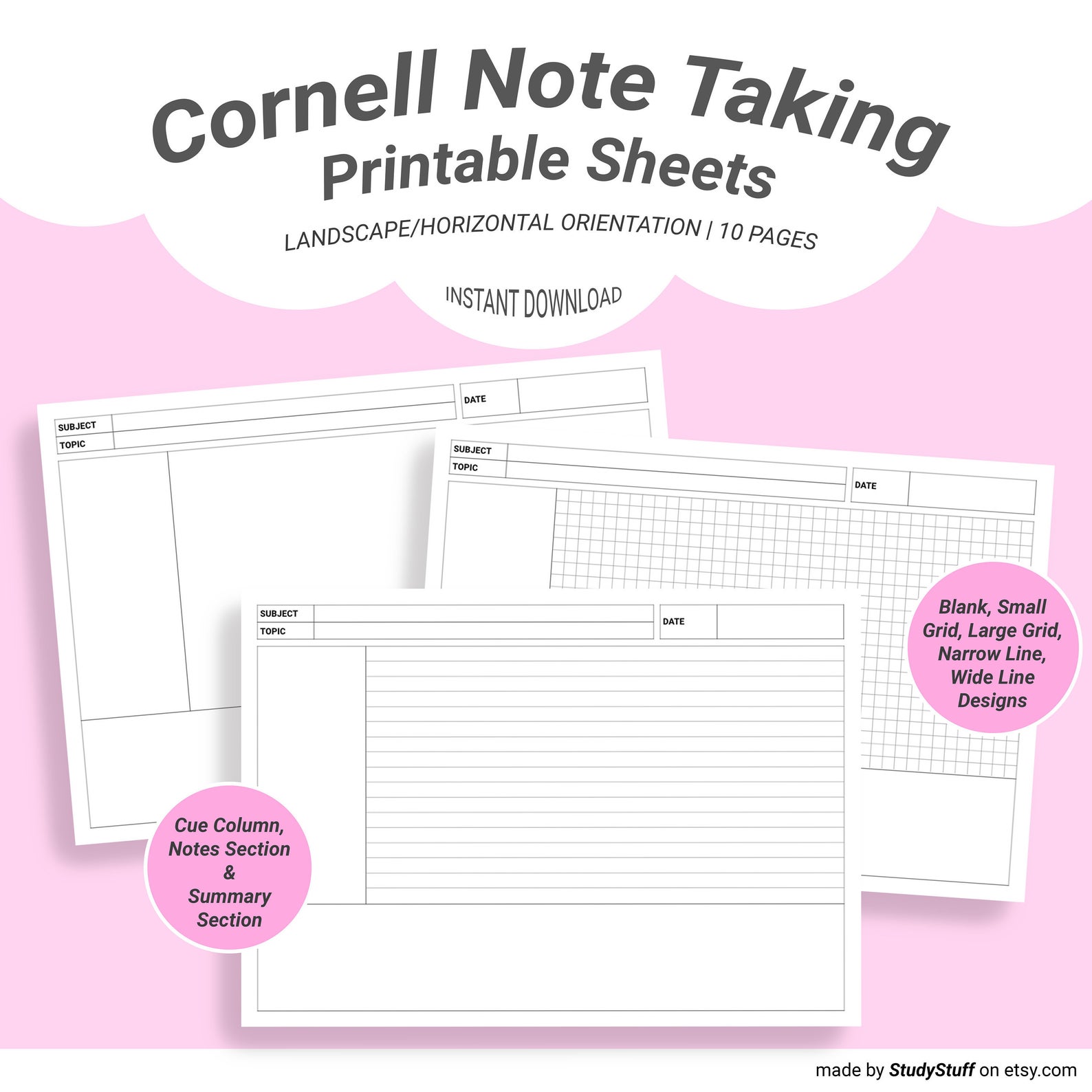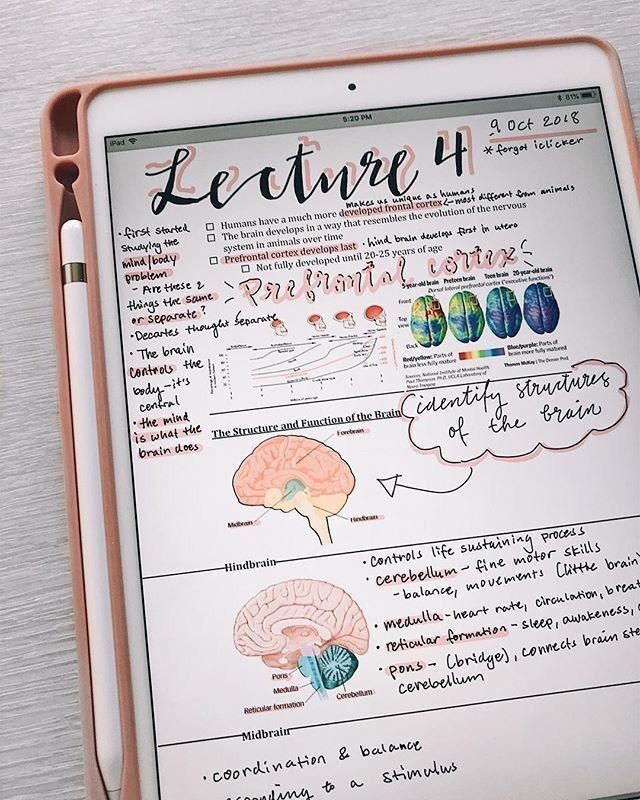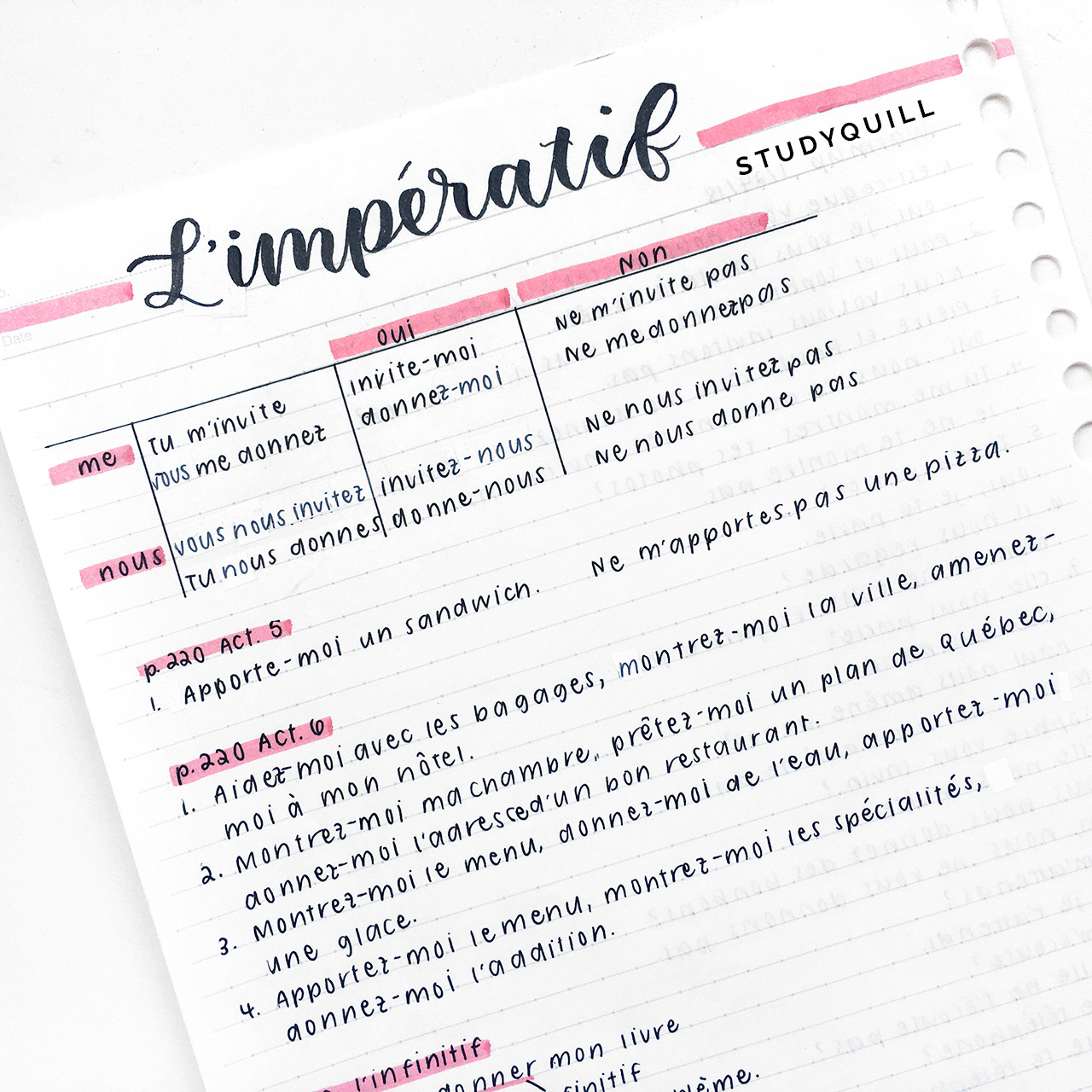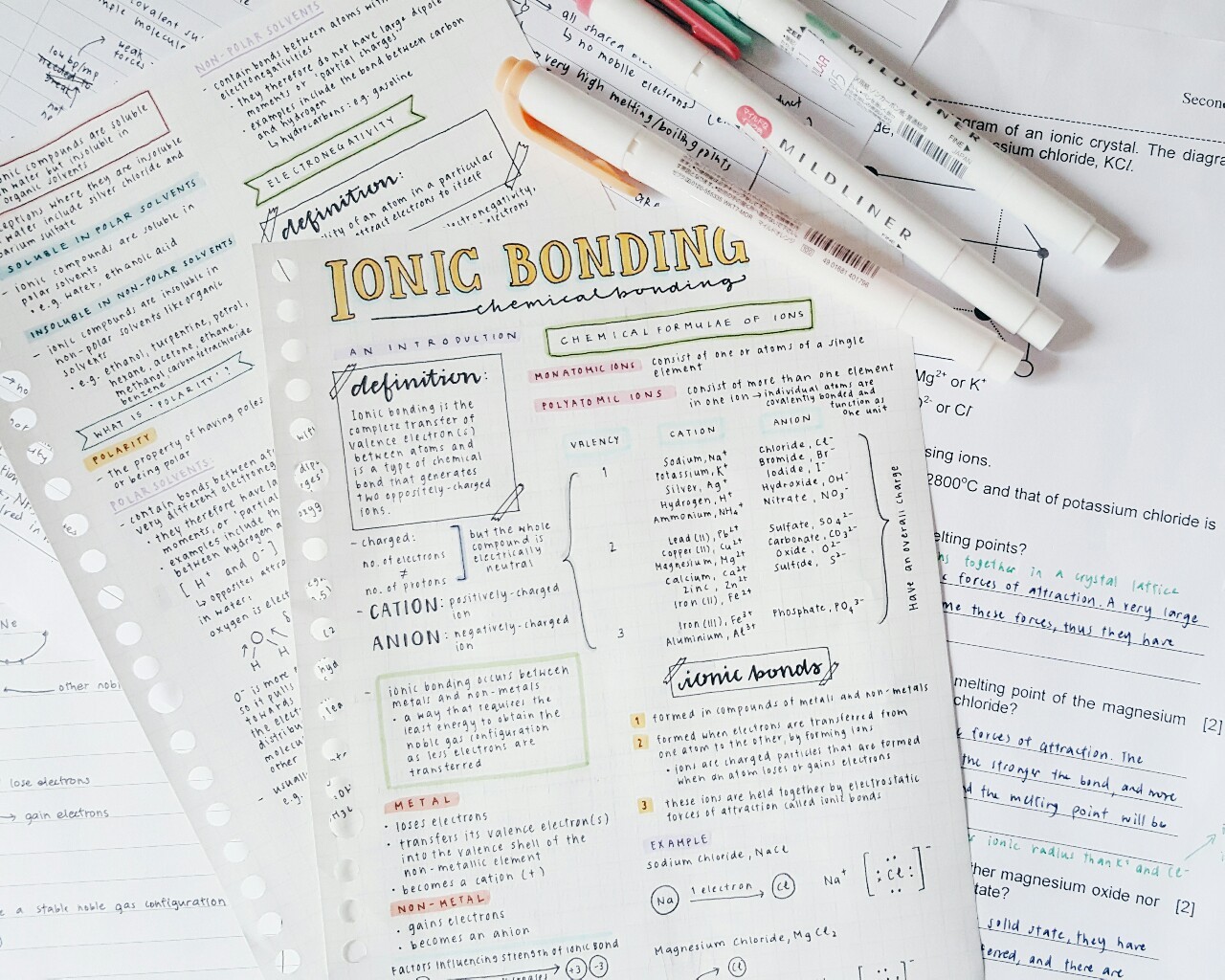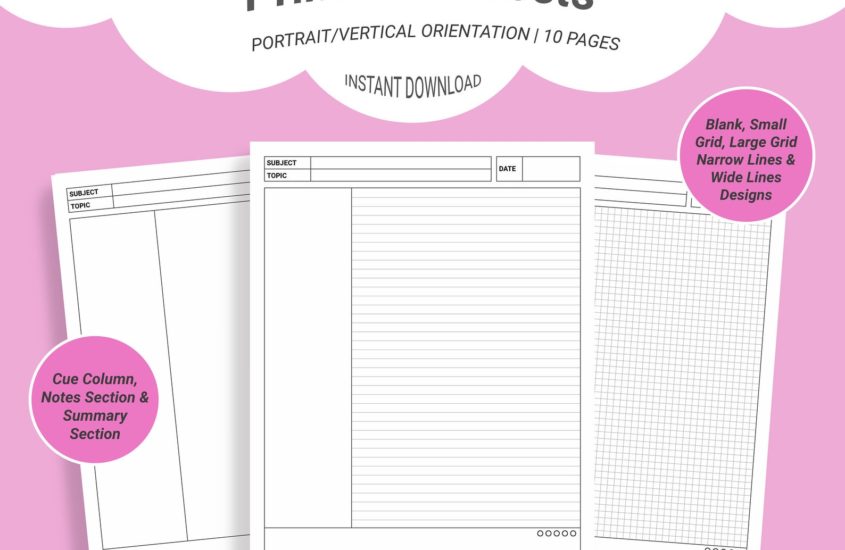
Use This Cornell Note Taking Printable Template To Make Your Notes Neat & Effective
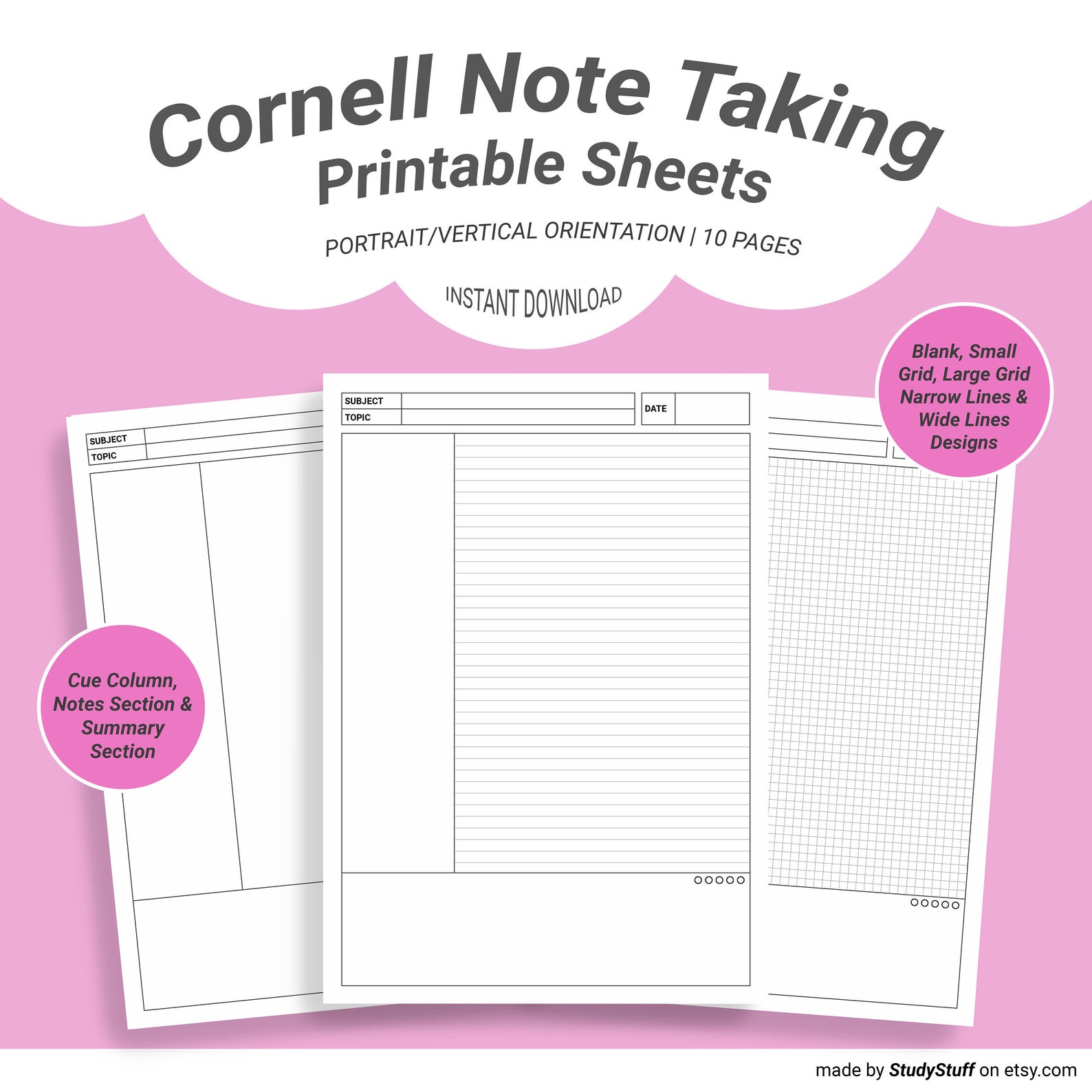
A printable Cornell note taking template is a PDF document featuring a note taking box that is either blank, lined or grid with a revision column on the left and a summary box at the bottom of the page. It is used by students who want to create organised, neat and effective notes to help them succeed in their studies by encouraging them to create succinct notes and then to revise them with active recall methods.
What is the Cornell Note taking system?
The Cornell Notes system is a note taking method created in the 1940s by a professor called Walter Pauk at Cornell University.
It is a system for formatting notes for high school or university students that allows for active recall and revision later on. A student can either hand draw out the Cornell notes template each time they take notes or use a printable Cornell note template for neatness and more efficiency.
How are Cornell notes formatted?
A piece of A4 Paper is split into 2 columns. The one on the left is considerably smaller than the right. The left column (the cue column) is about 25% of the page and the right column (the note taking section) is about 75% of the page. This line down the page stops where a horizontal line drawn at the bottom of the page to create a row which is about 5cm thick.
See diagram below:
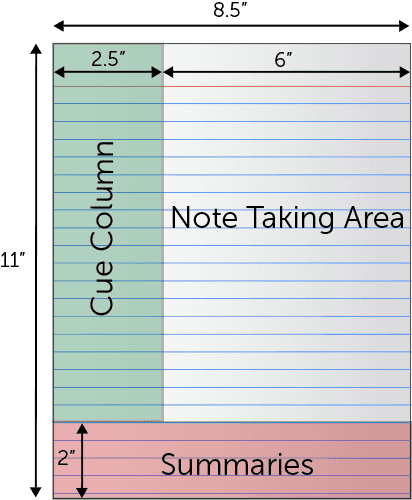
I know from experience that it can become quite annoying and time consuming to draw up the Cornell note layout each time you need to take notes, and this can often be multiple times in one lesson. That is why I created a Cornell note taking printable template to reduce the amount of time you have to spend formatting your notes so you can focus on the important information in class instead 🙂
How to Take Cornell Notes
It is really easy to take effective notes using a Cornell notes taking template.
There are 3 main steps:
- Write your notes during class
- Write a summary of the key ideas soon after class
- Revise and study the notes using the cue column and active recall methods
The Note Taking Section
The right column is where you write your notes during class time, a lecture or from a textbook. It is up to personal preference if you want this section to be blank, lined or grid paper but personally I generally prefer lined as it makes my notes a lot neater and makes sure that my handwriting does not go all wonky. This Cornell note taking template printable has two different line widths to choose from and also blank and grid options which can be used for maths and science notes and the blank version can also give you more freedom when drawing diagrams.
When: during class time/when you are self studying
What to include in your Cornell notes:
- Your notes should consist of the main ideas that are paraphrased.
- It is important to avoid long sentences here
- Dot points are a quick way to take notes
- Try to use symbols and abbreviations where possible
- Use a colour coded highlighting or underlining system if applicable
The Cue/Recall Column
The left column is called the cue column or the recall column. It’s purpose is for reviewing your notes. During class, as you are taking your notes, think of questions that you could ask yourself to study the content being learned.
When: As you write your notes think of questions that answers are the content you are writing
What to include in the cue column:
- Relevant questions to prompt you to recall the information.
- Keywords to prompt you to recall the information
The Summary Box
The bottom row is called the summary box. This is where you summarise what you have written in your notes after class.
When: After class. Around 15 minutes after class/as soon as possible
What to include in the summary box:
- A succinct summary of what you have learned
- Only the most important information, more detail is in your notes box
- Full sentences, around 3 to 5
- In your own words
The best way to write your summary:
I suggest covering up the note taking box with a piece of paper and writing a summary in pencil to test yourself on what you have just learned when it is fresh in your mind.
After writing a few sentences here, read what you have written in the notes box. See what information you have missed and what you might’ve gotten wrong.
Correct your work/add more detail and then write the summary in pen.
The summary box is one feature that makes Cornell notes so effective because it encourages you to reflect on your notes by summarising in your own words.
How do I review/study Cornell notes?
It is really simple to review Cornell notes. All you need to do is cover up the notes column with a piece of paper or equivalent and ask yourself the questions you have written in the cue column.
If you have a printable Cornell note template you can print off a second piece of paper, cut around the notes and summary box and use it to cover your notes and summary. This way there is definitely no way of cheating by peaking and thus there is no chance of developing a false sense that you know everything.
This study method of covering information, encourages active recall and makes sure you actually know your stuff.
It is also important to revise your notes regularly for it to be effective. A feature I added to my vertical printable Cornell notes template is a revision tracker which is really helpful because it encourages you to revise. The revision tracker is just a line of 5 small dots in the top right hand corner of the summary box that can be coloured in to keep track of each time you study your notes.
If you take notes and don’t revise them, they are useless!
Are Cornell notes effective?
One of the biggest reasons why Cornell notes are effective is because it is a note taking and study system all in one. You don’t have to write notes and then convert them into a study system like flashcards.
The more times you revise and study your notes, the more effective the system is.
Another side of Cornell notes that makes them effective is that they are well organised into topics, sub topics and supporting ideas. It makes it easier to learn concepts as they are logically broken down into smaller bits of information.
The Cornell Note Taking Printable Templates In Depth
Landscape/Horizontal Orientation Cornell Note Taking Template
Includes one PDF with 10 pages
☆★☆★☆★WHAT’S INCLUDED★☆★☆★☆
- Pages with Title, Subject & Date Sections
- Pages without Heading Sections (Full Page Notes)
- Blank Design
- Lined Designs (narrow & wide)
- Grid Designs (small & large)
Find this template here
Portrait/Vertical Orientation Cornell Note Taking Template + bonus revision tracker !
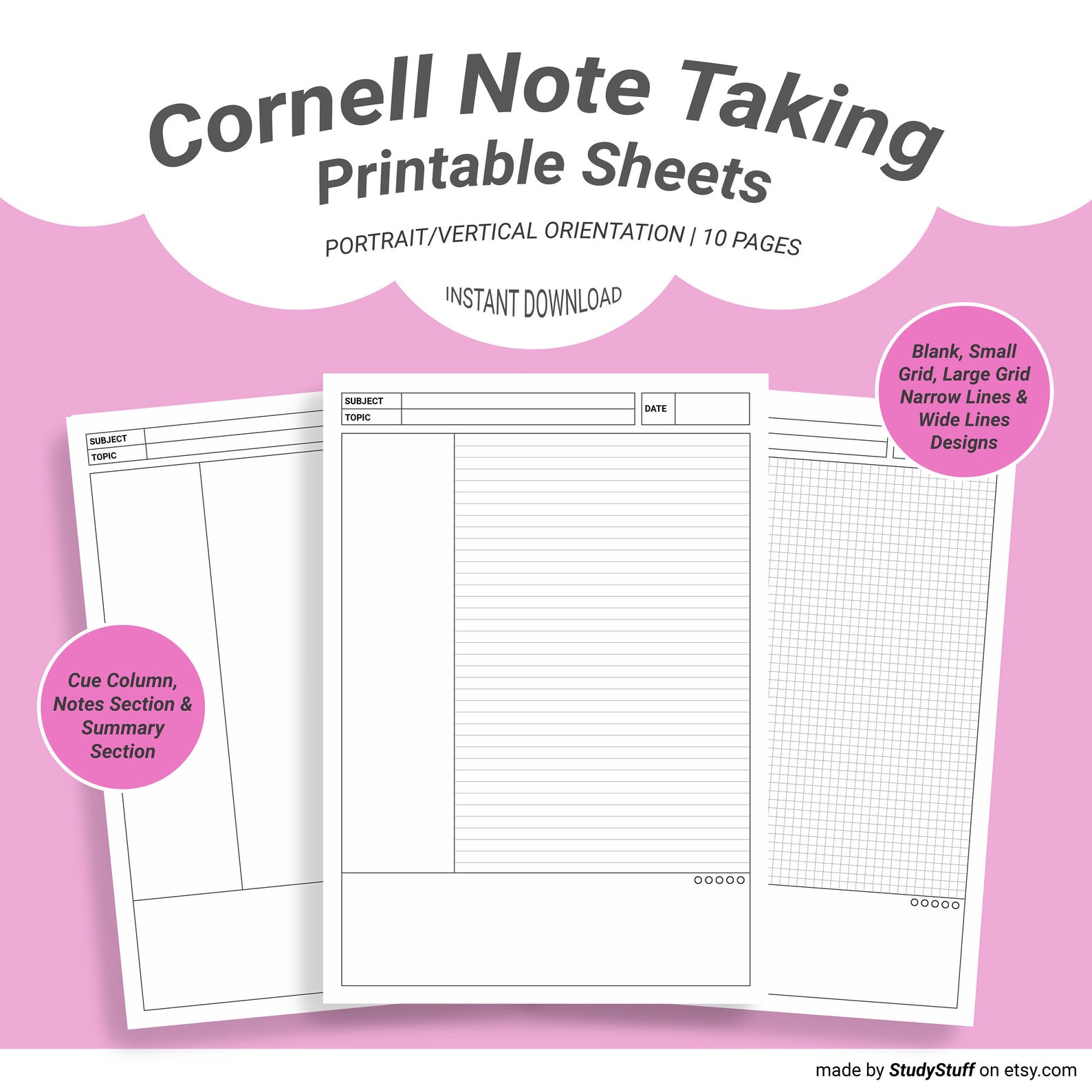
Includes one PDF with 10 pages
☆★☆★☆★WHAT’S INCLUDED★☆★☆★☆
- Pages with Title, Subject & Date Sections
- Pages without Heading Sections (Full Page Notes)
- Blank Designs
- Lined Designs (narrow & wide)
- Grid Designs (small & large)
+ Awesome Revision Tracker (Simply colour in a circle in the summary box when you have reviewed your notes)
Find this template here!
Before you leave!
Are you passionate about language learning?
Be sure to check out my article on the EASIEST way to learn a language by yourself! and my Digital Language Learning Planner!
If you take notes using your iPad, you need to know these 12 iPad note taking tips! They will make …
Yes, an iPad is worth it for note taking, especially if you are going to make the most out of …
There are many different note taking methods that can work well for language learning. To take effective notes for language …
To take pretty notes you need to firstly choose a consistent colour scheme. Next you should draw an eye catching …
To take notes on a PDF on an iPad you need to use a note taking or PDF reading app …
To get motivated to do school work one should set SMART goals, work in a motivating environment, break large projects …

